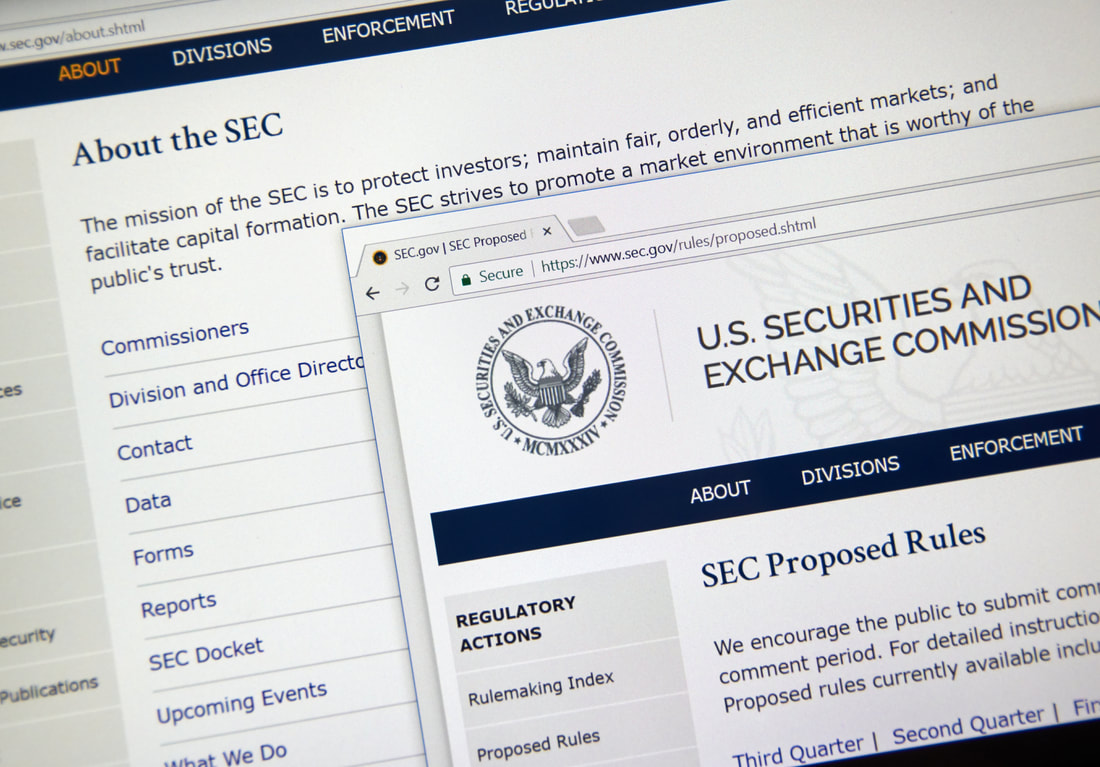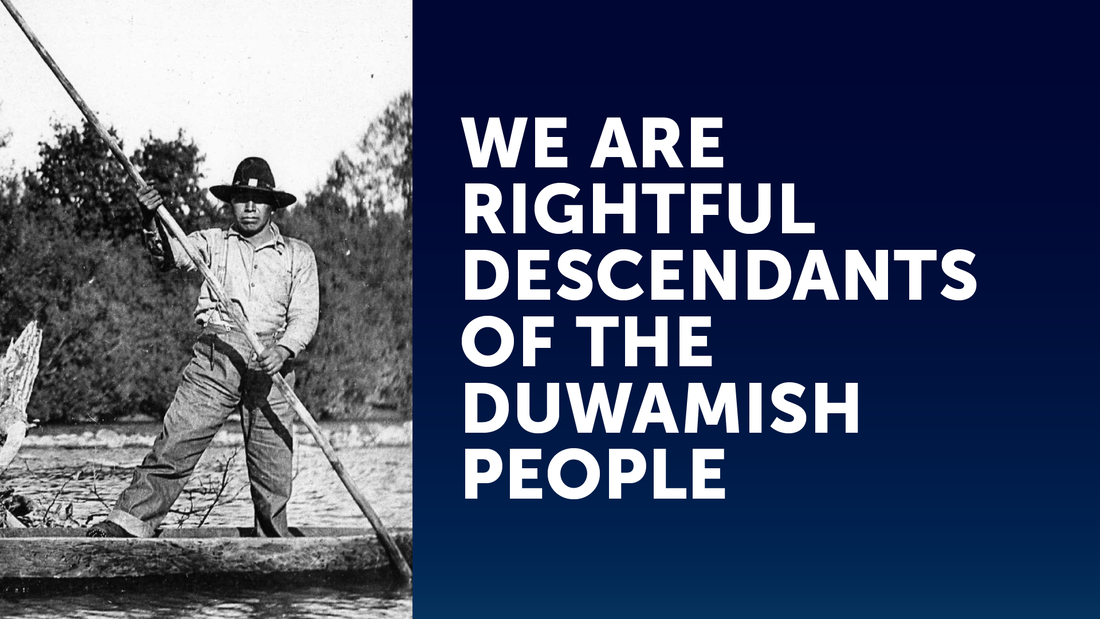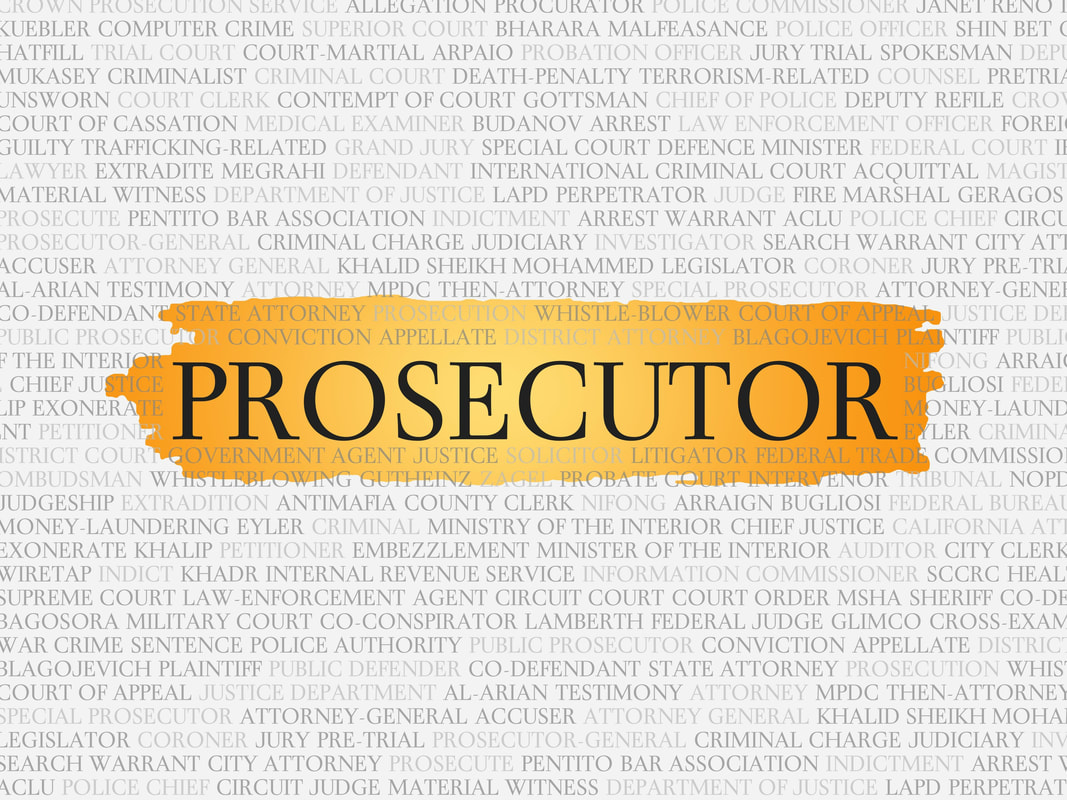|
"Given the legal and political challenges, along with the need to craft a balanced set of rules—one that would be likely to survive a court challenge—it's hardly surprising that the process is taking longer than anticipated," Legal departments anticipating an imminent rollout of a mandatory climate disclosure rule, one of the U.S. Securities and Exchange Commission’s most controversial and complicated proposals in decades, likely will have to wait until fall.
The SEC trotted out a 510-page proposed rule in March 2022. It would require public companies to detail climate-related risks they face and disclose greenhouse gas emissions. Some agency watchers anticipated a final rule would be released this spring. SEC spokeswoman Aisha Johnson said the agency does not comment on the timing of regulatory actions. But former SEC commissioner Robert J. Jackson Jr. stated on a webinar last month that the agency wanted to take more time to craft the rule after extensive public input. “I’ve just understood over the last few weeks it looks like the rule is going to be pushed back a little further than many had thought, including myself. It looks more like the fall of this year,” S&P Global Market Intelligence quoted Jackson as saying. That would likely mean public companies would likely not begin making climate disclosures until next year. But even that could be optimistic. Opponents, including manufacturers, have signaled they are chomping at the bit to litigate. Republicans in Congress have alleged the SEC is exceeding its authority by elbowing its way into climate issues and that the rule amounts to pandering to climate activists. Industry groups have howled that the rule will be burdensome and expensive and question its usefulness. Suppliers including farmers that would not be covered under the rule worry the burden of the rule will fall on them to furnish data to customers that will be required to make climate disclosures. “Given the legal and political challenges, along with the need to craft a balanced set of rules—one that would be likely to survive a court challenge—it’s hardly surprising that the process is taking longer than anticipated,” Cydney Posner, special counsel in Cooley’s public companies group, said in a client advisory this month. Public companies would be required to disclose Scopes 1 and 2 greenhouse gas emissions, while some larger firms would report Scope 3 emissions, which include those from their supply chain. Republicans in Congress have cited court rulings, such as West Virginia v. EPA, that they say reinforce that Congress should have oversight over the SEC’s climate rule. In a letter to SEC Chair Gary Gensler, they said regulators “cannot create new interpretations of existing law to pretend they have legal authority to support sweeping policy changes that Congress never intended.” Gensler counters that many publicly traded companies are already voluntarily disclosing greenhouse gas emissions and that some investors are already making decisions based on climate risk. Climate disclosure isn’t the only SEC proposal giving legal departments heartburn. Last year, the agency also proposed cybersecurity disclosures allowing investors to better compare companies’ cyberattack vulnerabilities and defenses. As with the climate rule, many expected a final release this spring. The timetable now is unclear. Commenters on the proposal have raised a number of concerns, including that companies would have to disclose material cybersecurity incidents within four days. Jeffrey Johnston, a partner at Vinson & Elkins, said that window is the primary concern he’s hearing about. “Four days is a really short period of time, especially given the chaotic nature of a cyber incident and the reality that often the initial view of what has happened is wrong or incomplete,” Johnston said. He said there’s also concern the proposed rules don’t have a carve-out to delay the reporting obligation when there is an ongoing internal or external investigation related to the cybersecurity incident. “Companies are concerned about tipping their hand and alerting the bad guys before the investigation is concluded. It will be interesting to see what the SEC does in the final rule,” he said.
0 Comments
A Seattle tribe wants a federal court to order the U.S. Department of the Interior to produce documents it alleges contain redacted information that could be pertinent in its case to overturn a 2019 decision by the agency to deny it federal recognition, saying the records shouldn't be concealed under the Administrative Procedure Act. The Duwamish Tribe, in a motion for in camera review filed Wednesday, alleged the DOI withheld or redacted 11 documents when the agency responded to a February court order to complete and supplement the government's administrative records with additional information in its decision to deny federal recognition. In redacting the information, the DOI claimed it had a blanket protection from disclosure by deliberative process privilege, which protects information that shows the process by which a government agency reaches a decision, the motion says. The tribe is asking the court to determine if the documents are protected by deliberative process privilege or if their "probative value outweighs any potential harm to the agency from their non-disclosure." "The deliberative process privilege … does not apply in this case, where the redacted and withheld documents may go to the heart of the question of whether an agency action violated the tribe's equal protection or due process rights, or whether the agency otherwise acted arbitrarily and capriciously in violation of the [Administrative Procedures Act]," the tribe said. Litigation started in May 2022, when the tribe sued the DOI over its denial of federal recognition status, saying the department disregarded the 1855 Treaty of Point Elliott signed by Chief Seattle and government officials that proclaimed the tribe's sovereign status. The complaint alleges the DOI has declined to recognize the Duwamish Tribe for decades and in doing so, violated the tribe's right to equal protection under the Fifth Amendment when the agency found the tribe couldn't meet certain criteria for the approval. "By refusing to acknowledge the Duwamish Tribe and place the tribe on its list of federally recognized tribes, the [DOI's] final decision unlawfully terminates the prior federal recognition of the Duwamish Tribe," according to the complaint. In August 2022, the DOI gave the tribe the administrative record pertaining to its denial of federal recognition, but omitted relevant information that the tribe believed existed, based on responses to Freedom of Information Act requests the tribe had submitted. The tribe contended the proposed DOI record didn't contain any documentation supporting its refusal to apply 2015 regulations to its decision or its 1997 decision to federally recognize the Snoqualmie Indian Tribe of Washington, Wednesday's motion says. In compliance with the February court order to supplement the administrative record for the Duwamish Tribe, the DOI identified 207 new documents, produced 30 of them in unredacted form and asserted deliberative process privilege over 126 of the records. Out of the 126 privileged documents, the DOI withheld 100 of them in full, according to the tribe. "It is significant that the only documents that the department now claims are privileged are documents that were initially excluded from the administrative record, but which the Duwamish brought to the court's attention in its initial motion to complete the record (after the tribe learned that these documents existed through its FOIA requests)," the tribe said. "Defendants should be required to certify that any document that has been excluded from the administrative record is documented in the department's privilege logs." Counsel for the parties met May 5 over the DOI's blanket assertion of privilege over several of the documents, with the department agreeing to further review the records to determine if they could be produced with specific redactions. The DOI, however, later determined it "did not find factual information that can be segregated out of the withheld documents." The tribe contended that privilege over documents is inapplicable when constitutional claims are at issue, saying courts in the past have found due process violations in the DOI's denial of federal recognition status where there is evidence of "informal decision-making, behind closed doors and with an undisclosed record" that "is not an appropriate process for the determination of matters of such gravity." In addition, the tribe said courts have relied on evidence of "bad faith" or "improper behavior" by a federal agency, concluding that when a party challenges an agency action, the "actual subjective motivation of agency decision makers" may be material. "Here, the withheld and redacted documents may go to the heart of the Duwamish Tribe's equal protection, due process, and [Administrative Procedures Act] claims — all of which challenge the department's apparent bias, bad faith, and otherwise improper behavior directed at the tribe," it said. The tribe first contacted the DOI in 1977 seeking recognition, but was soon denied when U.S. District Judge George Hugo Boldt ruled in litigation over tribal fishing that the Duwamish Tribe wasn't a successor to the tribe that signed the treaty. The ruling was later affirmed by the Ninth Circuit, according to the complaint. For three decades, the tribe pursued recognition by formally petitioning the DOI and seeking changes to its regulations before the agency's final denial was confirmed in 2019. Counsel for both parties could not be reached Friday for comment. The Duwamish Tribe is represented by Bart J. Freedman, Theodore J. Angelis, J. Timothy Hobbs, Benjamin A. Mayer, Endre M. Szalay, Shelby R. Stoner, Natalie J. Reid and Courtney A. Neufeld of K&L Gates LLP. The Department of the Interior is represented by Todd Kim, Devon Lehman McCune and Christopher C. Hair of the U.S. Department of Justice's Environment and Natural Resources Division. The case is The Duwamish Tribe et al. v. Haaland et al., case number 2:22-cv-00633, in the U.S. District Court for the Western District of Washington. It’s been a year since the Department of Interior released the first volume of its federal investigation into Indian boarding schools. Native News Online Senior Reporter Jenna Kunze, who’s written more than half of the 175-plus stories we’ve published on Indian boarding schools, takes a look at what’s happened since the groundbreaking report was published, and what’s on the horizon. A year ago today, the U.S. Department of the Interior (DOI) released Volume 1 of its Federal Indian Boarding School Initiative Investigative Report detailing the history and ongoing legacy of the federal government’s 150-year policy of forcibly assimilating Native American children into white culture by sending them to Indian boarding schools. The investigation, a key part of the Federal Indian Boarding School Initiative launched by Interior Secretary Deb Haaland in June 2022, set primary goals to identify boarding school names and locations, burial sites, and the names and tribal affiliations of children interred at each location. As part of the investigative report, Assistant Secretary of Indian Affairs Bryan Newland—the report’s author—made eight recommendations to the Secretary of the Interior to fulfill the Federal Indian Boarding School Initiative, including:
A year later, the DOI has made substantial progress on at least two of Newland’s recommendations, while others remain works in progress that are being advanced by the federal government and, in some cases, by non-governmental organizations, tribes and volunteers. As well, the mainstream media has put a bright spotlight on the issue for the first time ever, creating awareness of boarding schools and their role in the assimilation and harm of Native Americans over the past century and a half. The leader of the nonprofit Native American Boarding School Healing Coalition (NABS), the organization at the helm of truth and healing work around Indian boarding schools for more than 10 years, says the work over the past year has been an important beginning to what will ultimately be a years-long process. “It’s the first step of the federal government recognizing the harms that they've created through the boarding school era, and this step is absolutely necessary for us to continue to research and to collect records and bring together survivors so we can hear their testimonies,” NABS CEO Deborah Parker (Tulalip) told Native News Online. “Without this first volume, folks wouldn't understand where to go, because you can’t read about this history in national curriculum.” What the report said The 106-page report penned by Newland found that the federal government operated or supported 408 boarding schools across 37 states, including Alaska and Hawai’i, between 1819 and 1969. The DOI also identified more than 1,000 additional federal and non-federal institutions that didn’t fall under its definition of “federal Indian boarding school.” Those additional institutions included Indian day schools, sanitariums, asylums, orphanages, and stand-alone dormitories that worked similarly to assimilate Native youth into white society. The government's stated aim with the Indian Boarding School policy was to “subdue” the Indian by replacing Native culture with white culture, and to eventually change “the Indian’s economy so that he would be content with less land,” the DOI report quotes from old federal documents. The report also details the conditions students experienced at school, including: manual labor, corporal punishment, infrastructure deficiencies, poor diets, and physical, sexual, and emotional abuse. More than 500 children died at 19 of the schools, and the DOI identified student burial sites at 53 schools — numbers that are expected to rise as the Department of the Interior continues its research. The report lays the groundwork for the continued work of the Interior Department to address the intergenerational trauma created by policies supporting the historical federal Indian boarding school system. It reflects an extensive and first-ever federal inventory of government operated Indian boarding schools, including summary profiles of each school and maps of general locations of schools in current states. “Federal Indian boarding school policies have touched every Indigenous person I know,” Secretary Haaland said in a statement to Native News Online. “Some are survivors, some are descendants, but we all carry this painful legacy in our hearts. Deeply ingrained in so many of us is the trauma that these policies and these places have inflicted. “Through the Federal Indian Boarding School Initiative, we are undertaking a comprehensive effort to recognize the legacy of boarding school policies with the goal of addressing their intergenerational impacts and to shed light on the traumas of the past. To do that, we need to tell our stories.” What’s been done As a response to the report’s recommendation to “document Federal Indian boarding school attendee experiences,” Secretary Haaland launched The Road to Healing tour last May, a year-long commitment to travel across the country to hear from boarding school survivors and their descendants. To date, Haaland and Newland have held six hearings in: Anadarko, Oklahoma; Pellston, Michigan; Mission, South Dakota; Gila River Indian Community, near Phoenix, Arizona, Many Farms, Arizona on the Navajo Nation; and Tulalip Indian Reservation, near Seattle, Washington. During those sessions, hundreds have shown up at each stop along the Road to Healing tour to hear testimony from other survivors and their descendants about the intergenerational trauma that began during the boarding school era. At the events—which have typically run upwards of five hours— dozens of survivors shared stories about horrendous physical, emotional and sexual abuse they endured, while descendants spoke of the lasting impact on their families and communities. One survivor, 78-year-old Rosalie Whirlwind Soldier (Sicangu Lakota), testified at the third Road to Healing stop on South Dakota’s Rosebud Indian Reservation that growing up in boarding school, she didn’t know what love felt like. She recounted a story of a nun sending her and another classmate into a dark cellar as punishment, where they were forgotten about for “days,” subsisting off pickles that were stored down there. She also spoke of nuns chopping her long braids, powdering her in DDT pesticide, and calling her a “devil-speaking person.” “I thought there was no God, just torture and hatred,” Whirlwind Soldier said. “We went through what the Jews went through as Lakota people. The only thing they didn’t do to us is … gas us.” At the Road to Healing sessions, Secretary Haaland and Assistant Secretary Newland often just listen, sometimes jotting down notes. Even so, Newland has spoken about how tough it is on both Haaland and him to hear the stories. “People stand up in a gymnasium full of people and talk about the worst things that have happened to them,” Newland said during a recent talk at Western Michigan University in Kalamazoo, Michigan. “I want you to know that I’m with you on this journey and I will listen,” Haaland said in her opening remarks at the most recent Road to Healing stop in Washington late last month. “I will grieve with you. I will weep with you and I will feel your pain, as we mourn what was lost. Please know that we still have so much to gain. The healing that can help our communities will not be done overnight.” A comprehensive effort Since last May, the federal investigation has made significant progress on two of its primary objectives: collecting the oral histories from survivors, and naming and locating boarding school sites throughout the country. They were able to glean much of this information from NABS, which shared its decade-long work with the Department of Interior as part of a Memorandum of Understanding the two groups signed in December 2021, and is ongoing. In the last year since the investigation was released, former boarding schools schools have begun using ground penetrating radar technology to search for unmarked graves; a bill has again come before Congress that would establish a Truth and Healing Commission on Indian Boarding School Policies; and organizations have doubled down on work to retrieve and digitize school records that will help account for every child who attended boarding school, including those who died there. In late April, the National Endowment for the Humanities committed $4 million to support the digitization of records from the federal Indian boarding school system, and to create a permanent oral history collection documenting students’ experiences. And last week, a group of archivists published a list identifying 87 Catholic-run Indian boarding schools that operated in 22 states through the late 1970s, demystifying the process of locating records held by Catholic institutions. Shining a light For many Native Americans and First Nations people, the dark legacy of government-run boarding schools was an open secret throughout Indian Country. But beginning with the news from Kamloops in May 2021 and continuing through the past two years, the issue of boarding schools has become more visible to non-Natives in the U.S. and Canada. Some of that has been driven by the mainstream media, beginning with the global coverage spurred by Kamloops and continuing through the release of the report last year and the stops along the Road to Healing tour over the past 12 months. As well, boarding schools have been topics of storylines in national television shows and the focus of podcasts, including the new “American Genocide” produced by Illuminative, a Native-led nonprofit. Last week, First Nations journalist Connie Walker won two of the biggest prizes for journalism in North America—the Pulitzer Prize and Peabody Award— for her podcast ‘Stolen: Surviving St. Michael’s’ that explores the abuse that happened at the Indian residential school her father attended in Canada. “The issue of the boarding school is very much coming to light,” Parker told Native News Online. “We have a long way to go, but the voices of our ancestors, of our relatives, are coming to the surface. It’s about time. But it will be several years before we reach any sort of model that tells a complete story.” Currently, DOI is at work at Volume 2 of its federal investigation into boarding schools, due out by the end of this year, according to the Department. That report will focus on identifying: locations of marked or unmarked burial sites on or near former school sites; names, ages, and tribal affiliations of children interred at such locations; and an estimation of federal dollars spent supporting the Federal Indian boarding school system, as well as Native land held in trust by the United States used to support the Federal Indian boarding school system. “I think for Volume 2, I'm looking forward to what the Interior is learning through hearing the testimonies of our elders and family members,” Parker said. “On the road, the Interior and others have heard some incredibly painful stories, and I'm interested to hear what the federal government intends to do with what they hear. What are the supports that they will bring forward for Congress to understand and to approve? [There is] need for mental health and cultural support and revitalization of our languages and food sovereignty, and all those pieces that were nearly destroyed.” Former boarding school students, now elders, are also waiting. Duane Hollow Horn Bear (Sicangu Lakota) is a spiritual leader, educator, and survivor of a federal Indian boarding school in Mission, South Dakota. Hollow Horn Bear testified at the Road to Healing stop on the Rosebud Indian Reservation, where he shared with federal officials about the abuse he endured at the hands of priests as a child in the boarding school system. In a word, Hollow Horn Bear told Native News Online that he’s “disappointed” about the lack of federal action as a result of the Road to Healing tour. “All of that work, all of that gathering, all the talks, it was just to collect and store data,” Hollow Horn Bear said. “There was no energy, there was nothing that was going to be done about it. We poured our hearts out and it was just for the collection of data. While U.S. Rep. George Santos, R-New York, is hardly the first politician to be indicted while in office, the 13-count federal indictment unsealed this week nevertheless stood out as unusual to campaign finance and white-collar defense experts.
“Typically, when you have a sitting officeholder indicted for campaign finance crimes, they usually revolve around things like the misuse of campaign funds [or] soliciting donations outside the legal limits,” said former Federal Election Commission senior counsel Daniel Weiner. But Weiner, who is now senior director of Elections & Government Program at the Brennan Center for Justice, said Santos’ indictment is different. “What’s extraordinary about the Santos case is that at least for now, we’re not talking about that,” he said. “We’re talking about a much more brazen fraudulent scheme of the type that isn’t unique to politics. But it’s the first example that I can remember recently where a sitting officeholder has been indicted for essentially trying to bilk their donors through what amounts to a somewhat complex scam. And that’s somewhat new territory.” Santos, who represents northern Nassau County and the northeastern corner of Queens, pleaded not guilty Wednesday to wire fraud, money laundering, theft of public funds and making false statements to the U.S. House of Representatives. He has been accused of engaging in multiple fraud schemes that appear mostly unrelated, involving everything from an allegedly fraudulent application for unemployment benefits at the beginning of the COVID-19 pandemic to a scheme to launder campaign contributions to his 2022 congressional campaign. Michael Weinstein, a former U.S. Department of Justice trial attorney and current chair of the White Collar Defense & Investigations Department at Cole Schotz, said Santos’ need to mount multiple defenses to the various schemes will present challenges for his defense team. Santos told reporters Wednesday that he has “plenty of evidence” he plans to share with the government in the course of his defense. “I’m going to fight my battle,” he said. “I’m going to deliver. I’m going to fight the witch hunt. I’m going to take care of clearing my name and I look forward to doing that.” Weinstein said Santos’ “bravado” is fairly typical for a politician facing indictment. “It’s not unexpected that that’s what he’d say,” Weinstein said. “But in the cold dark reality of federal criminal law, that’s going to fall by the wayside pretty quickly once the evidence comes to light and once he realizes he’s in a deep hole, potentially without a shovel.” Joe Murray, Santos’ attorney, did not respond to requests for comment. Weiner said Santos’ indictment sheds light on what steps the DOJ is willing to take to confront “scammy political behavior,” which he said has increased in recent years. “There’s been an open question about to what degree the Department of Justice would respond, not just by bringing these kinds of narrow campaign finance prosecutions but by really employing the much broader set of federal anti-fraud laws, and this is an indication that at least in very extreme cases, they are willing to prosecute people under those statutes,” Weiner said. Weiner said he would not be surprised to see an amended indictment charging Santos with some of the other allegations that have been reported in the press, including “more conventional campaign finance violations.” “Now, those are very hard to prove as a criminal matter, because you have to show not only that the person committed the act intentionally but that they knew what they were doing was illegal,” Weiner said. “So it could be that they’re holding back on those or it could be that they’re still investigating them.” The New York Times first published reports on major discrepancies in Santos’ resume and reported accomplishments in late 2022, weeks after Santos was elected to Congress. Washington, DC (April 28, 2023) – On April 28, President Biden commuted the sentences of 31 individuals convicted of drug offenses, including several for marijuana distribution, announcing the reprieve as part of a broader effort to help those who have completed federal sentences reenter society. The commutations leave their convictions in place but reduce or excuse any remaining sentences.
This represents another small but meaningful act by President Biden to fulfill his campaign pledge to address America’s crisis of criminalization and the system of mass incarceration it fuels. The White House simultaneously released its Alternatives, Rehabilitation, and Reentry Strategic Plan, outlining steps the administration recommends to help formerly incarcerated individuals access services such as health care, housing, education, and employment. For example, the plan includes $486 million in grants and 3,300 rental assistance vouchers from the Department of Housing and Urban Development to assist with housing issues. The plan would also implement a special Medicare enrollment period for individuals who have been released from prison. NACDL President Nellie King stated: “NACDL is elated for the few individuals and families who will benefit from President Biden’s actions. While commutations are necessary and should absolutely be celebrated when granted, this rare form of relief is a last resort for incarcerated individuals. As the nation’s defense bar, NACDL strongly supports robust use of the executive clemency power but also calls on policymakers to prevent injustices before they occur by: exposing and reforming police misconduct, safeguarding privacy, fighting for the right to trial, protecting against overzealous prosecution, reforming sentencing laws, strengthening public defense and the sixth amendment right to counsel, and redressing rampant racial disparity at every level of our criminal legal system. If President Biden wants to uphold his campaign promises to address these issues, he will need to work with Congress to fix the terrible policies that plague our criminal legal system, such as the 1994 crime bill he helped write.” NACDL Executive Director Lisa Wayne stated: “The announcement represents an incremental step toward correcting the racial injustice of the failed war on drugs which blatantly targeted communities of color, and we look forward to many more similar commutations in the months ahead. We congratulate the recipients, their attorneys, and their loved ones on this joyous occasion, but we are disappointed that this mercy was extended to so few. There are thousands of people like the recipients today who are currently incarcerated and meet the criteria for a second look and relief. There is no greater evidence of the failures of our legal system than the stories of those behind bars and the toll their incarceration takes on their families and communities. These are people who have more than paid their debts to society and deserve a second chance. While we welcome today’s recipients home and hope they can access resources to help with reentry, we will keep fighting for a system that prioritizes fairness and redemption and rejects senselessly cruel punishment.” CONTACTS Kate Holden, NACDL Public Affairs and Communications Associate, (202) 465-7624 or k[email protected] TULAILIP, Wash.—The Native American Boarding School Healing Coalition (NABS) plans to launch a website this summer that will allow Native Americans to search for information on relatives who attended Indian boarding schools. The digital archive repository and research tool will launch with nearly 50,000 records from a federal archive and, over time, integrate records from other Indian boarding school databases developed by private, nonprofit and governmental organizations. “I hope that we find relatives that you're searching for,” NABS CEO Deb Parker, a citizen of the Tulalip Tribes in Washington, said last week. “Even if they’re on the other side, I know that they want to be found.” Parker was speaking to about a group of two dozen American Indians, Alaska Natives and a few journalists who gathered at the Tulalip Indian Reservation’s administrative building on April 24 to learn how to use the research tool. NABS staff invited the participants, including Native News Online, to a sharing-and-listening session on the heels of the Department of the Interior’s sixth stop on its Road to Healing tour at Tulalip the day prior. The Road to Healing is a year-long tour across the United States to provide Native survivors of the federal Indian boarding school system and their descendants an opportunity to share their experiences. Last year, the federal government released an investigative report that showed for the first time the United States operated or supported at least 408 boarding schools that “directly targeted American Indian, Alaska Native, and Native Hawaiian children in the pursuit of a policy of cultural assimilation that coincided with Indian territorial dispossession.” The report called the institutions “both traumatic and violent” and identified at least 53 burial sites on or near former schools’ properties, with more gravesite discoveries expected as research continues. Although the names of the institutions themselves are known or becoming known, the identities of the estimated tens of thousands of Native children who went through the Indian boarding school system—many of whom died at schools far from home and were never returned to their families—are not. Student and school records are held in repositories across the country, which are oftentimes far removed from Native communities and available only for in-person viewing, or altogether closed to the public. That is why NABS, a national nonprofit dedicated to truth and healing around Indian boarding schools, created The National Indian Boarding School Digital Archive—NIBSDA for short—that will launch sometime this summer. To begin, NABS has digitized a collection of 47,000 pages of federal, tribal, and state records from the The National Archives in Seattle, a regional federal record facility of the U.S. National Archives and Records Administration. The idea is to partner with organizations doing similar work in other regions, such as The Carlisle Indian Digital Resource Center in Pennsylvania, and the Geona Indian School Digital Reconciliation Project, to eventually cover the country, and become the “authoritative center” for Indian boarding school records, according to the digital archivist who designed the database. “We see it as a way to reveal the truth about Indian boarding schools and the lasting legacies that these schools have affected,” said NABS director of digital archives, Stephen Curley (Diné). Curley, NABS’ digital archivist assistant Fallon Carey (Cherokee), and a small staff has been working to find, catalog, and scan relevant records from federal boarding schools in Oregon, Washington, and Alaska since 2019. Curley said that they prioritized records including: student case files, school administrative materials including lesson plans and curriculum, and documentation of problems, such as registers of run-away students, or student deaths.
“We're trying our best to account for each and every student,” Curley said. “Really, [the tool] is for communities who want to understand more about what their relatives experienced at these institutions, and to try to find them.” Beyond scanning historical documents, the NIBSDA project is about community engagement, and teaching people how to conduct boarding school research. “We’re trying to create this information literacy around how to conduct boarding school records research, because it is a new thing,” Curley said. “We know that this is going to be a new feature of research and these listening sessions are an opportunity to glean what (each) community’s needs are so that we can address those needs.” The database’s pathfinder tool prompts users with guided research questions to help them better locate their relatives, including “What is my relative’s name, and did they have any aliases or traditional names?” and “Do I know the name of the boarding school? What about the name of the agency?” The work—which NABS is funding through various grants—will be ongoing for “years and years and years,” Curley said. That’s because, in part, the majority of school records have not yet been located, let alone cataloged, according to NABS’ data. Additionally, 28% of the total records are held at church-run archives, according to NABS. NABS has been at the forefront of advocacy around a federal bill that would establish a Congressional Commission on Truth and Healing. The commission would search for unmarked graves, document ongoing impacts stemming from the Indian boarding school era, and—critically— it would empower the commission to subpoena records from religious organizations who operated boarding schools. “That’s half the bill: how do we get access to the records?” said Theresa Sheldon (Tulailp Tribes), director of policy and advocacy for NABS. Overall, Curley said, boarding school records have the power to reveal a lot of unknowns around boarding school, like how many children went? What were their names and tribal affiliations, what was their experience like and, in some cases, where are they buried today? “NIBSDA will allow us to better understand the trauma that this lasting boarding school legacy has left in its wake,” Curley told Native News Online. “We know and we believe that knowing the truth will allow us to start healing, as individuals and as communities.” |
HISTORY
April 2024
Categories |
© Walk 4 Change. All rights reserved.








 RSS Feed
RSS Feed